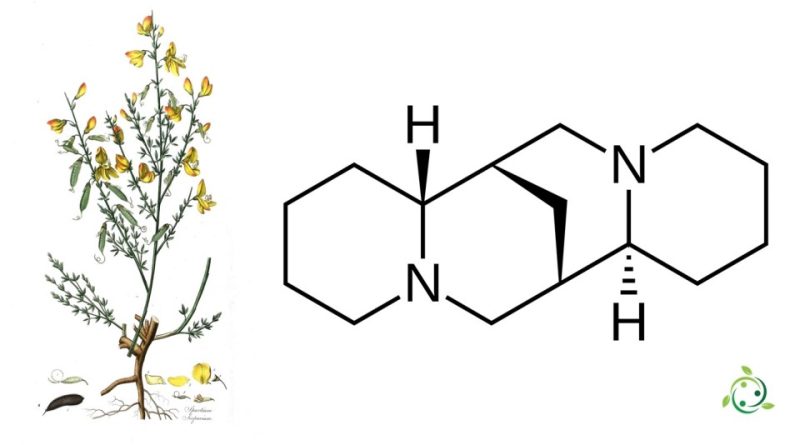Sparteine
Sparteine
Sparteine, whose term in the official IUPAC nomenclature is: 6R,8S,10R,12S)-7,15-diazatetracyclo[7.7.1.02,7.010,15]heptadecane, is an alkaloid with the brute or molecular formula: C15H26N2.
Sparteine is an alkaloid containing a tetracyclic bis-quinolizidine ring system derived from three C5 chains of lysine, or more specifically, L-lysine. The first intermediate in biosynthesis is cadaverine, the decarboxylation product of lysine catalysed by the enzyme lysine decarboxylase (LDC). Three cadaverine units are used to form the quinolizidine backbone. The mechanism of formation has been studied enzymatically, as well as with experiments with tracers, but the exact route of synthesis still remains unclear.
This alkaloid is an alkaloid found in some plants, particularly in the genus Spartium. The best known plant that contains sparteine is broom (Cytisus scoparius (L.) Link, 1822), previously classified as Spartium scoparium, which is a shrub belonging to the Fabaceae family. This plant is characterized by yellow flowers and thin leaves, it is native to the Mediterranean regions and from which it is extracted by extraction with alcohol; an oily, colorless liquid is obtained, with a bitter taste, an odor similar to that of aniline, soluble in ether and in chloroform, slightly in water.
Sparteine is an active ingredient with a specific indication against heart rhythm abnormalities (arrhythmias). It belongs to the 1st class; It is a sodium channel blocker.
Sparteine has been used in the past in some popular traditions for medicinal purposes, but it is important to note that this substance can be toxic if taken in high doses. Sparteine has also been studied for its potential use in the management of certain conditions, but its safety and efficacy have been the subject of debate and it has even been banned in some countries for use in herbal products due to its possible toxicities.
Warning: The information provided is not medical advice and may not be accurate. The contents are for illustrative purposes only and do not replace medical advice.

